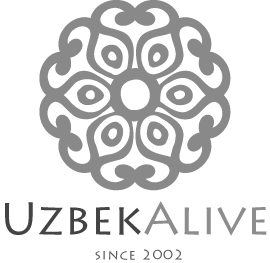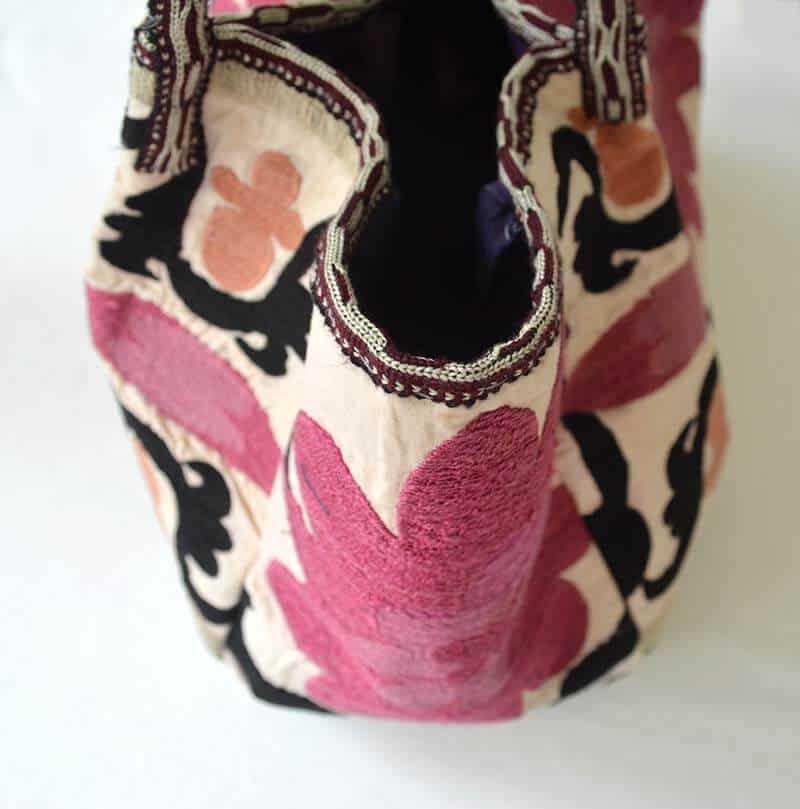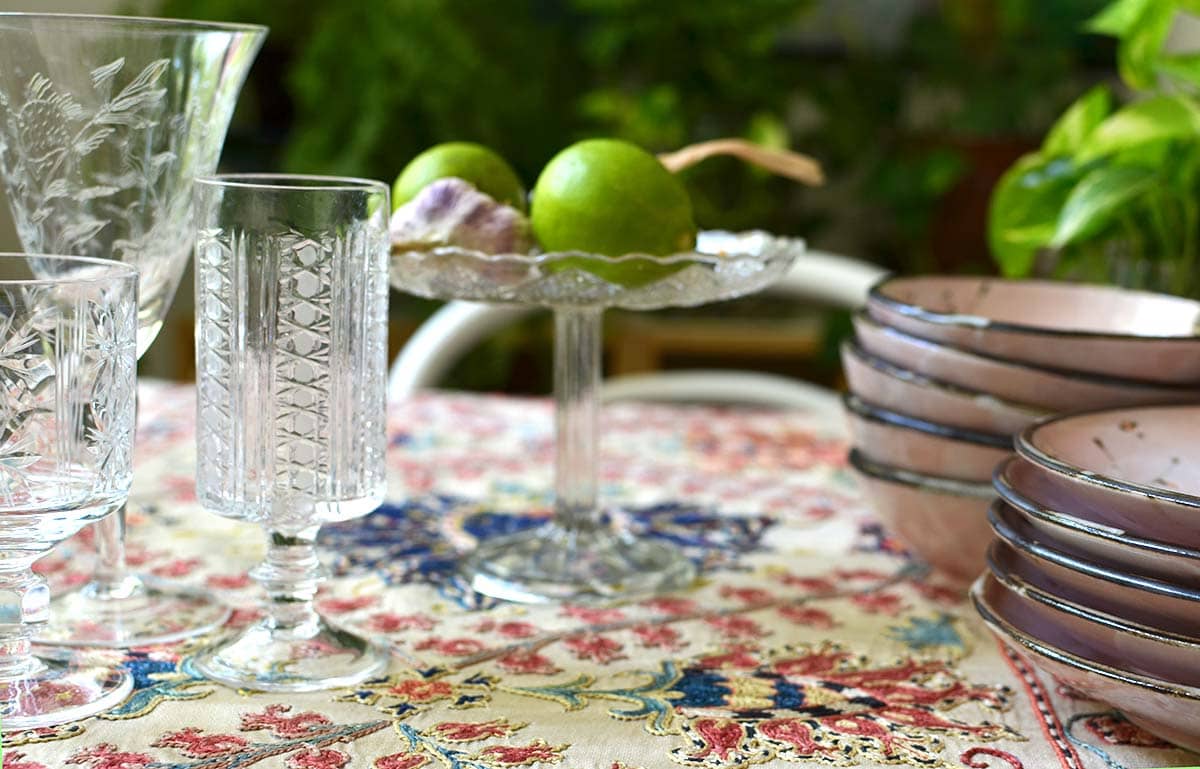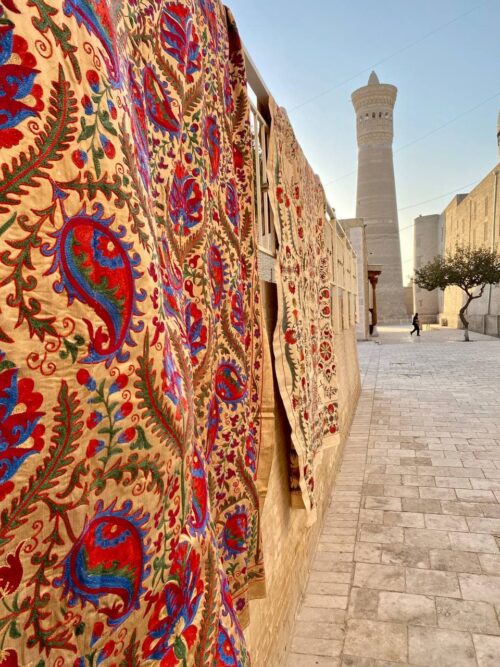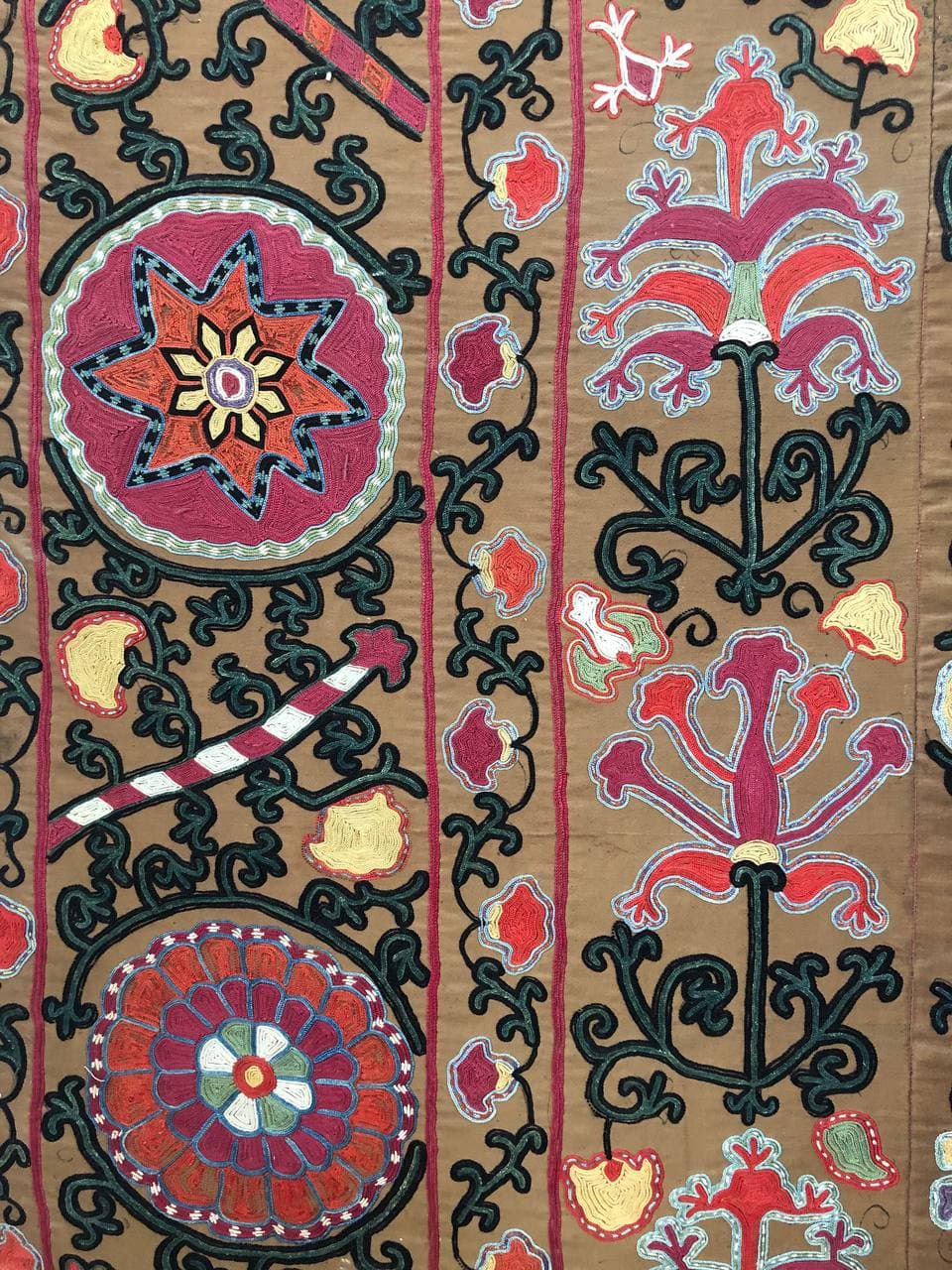Suzani bags: a new lease on life for a damaged suzani
A few days ago we added to our limited bags collection two new suzani bags, which deserve a post of their own – that’s how gorgeous they are!
In interior decoration suzani embroidery finds its use in every day textiles like cushions, bedspreads, teapot covers and wall hangings. Larger pieces of embroidery (e.g. wall hangings) occasionally get damaged here or there. These damaged parts of the suzani are removed while the rest of the suzani goes on to live as something new. This new product could be a smaller wall hanging, a suzani pillow cover or it could be suzani bags like the ones we recently added to our collection.
Suzani table decor for holidays
The inspiration for this suzani table decor collection came as a response to COVID-19 pandemic or rather our desire to be done with it.
To be done with the media noise, confusion, vaccination debates and illogical, often conflicting, data being fed to us. It was our way of saying “Enough is enough”. Basic precautions like avoiding large crowds remain but the goal is to drop fear and panic, to take charge of our wellbeing and to go on loving and celebrating our relationships.
“Designed by Miran”: a world of hand embroidered suzani
UzbekAlive is partnering with Bukhara based brand "Designed by Miran" to bring to our platform hand-embroidered suzani. All suzani products are listed in a new category of products called “Designed by Miran”.
New milestone
With Miran UzbekAlive is reaching a new milestone in terms of offering Central Asian textiles to the global audience. In addition to ikats which we have been offering since 2002, we now offer another artisanal gem of Uzbekistan textile heritage.- suzani.
Suzani exhibition in a harem
this post is about suzani, not so much about harem but I would like to start with some historic information to give you a context.
Summer residence of Emir of Bukhara: Sitorai Mohi-Hosa
The last Emir of Bukhara had his summer residence in the outskirts of Bukhara. The palace was built in the early 20th century. The style of the palace is a representation of the Emir himself - the man who stood between Eastern and Western traditions and curiously absorbed both. Russian influenced architecture of the palace was mixed with French furniture, Polish chandeliers, Chinese porcelain and Dutch heaters covered with German tiles. Colorful glass and plaster wall decorations In geometrical patterns indicate that the place belonged to a Muslim sovereign.
